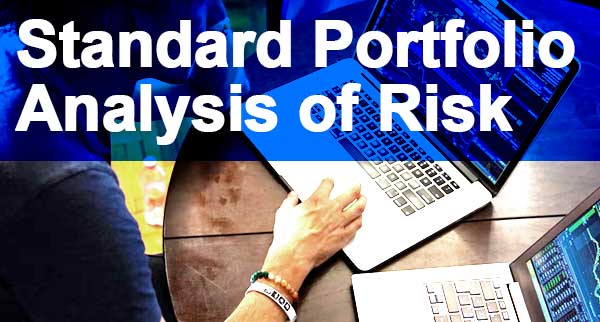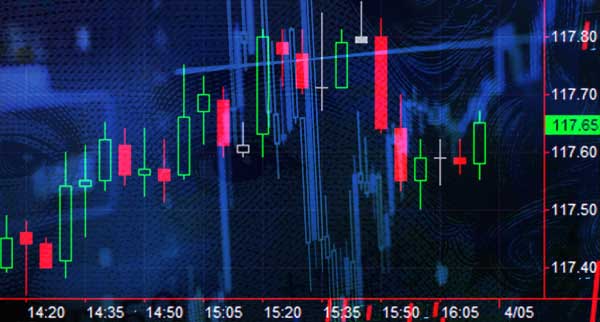
In 1988, the Chicago Mercantile Exchange was the organisation that first developed SPAN, which stands for Standard Portfolio Analysis of Risk. It does a calculation to determine how likely it is that a set of derivative positions, also known as a portfolio, will incur a loss and then uses this value to determine the initial margin that the company that holds the portfolio will be required to pay.
Using the SPAN method, one can determine the likely loss that will occur across a portfolio of derivatives positions and then use this value to determine the initial margin that will be payable by the company that is holding the portfolio. The SPAN risk array, which is a set of numeric values that indicate how a particular contract's value will increase or decrease depending on the circumstances, is the fundamental component of the methodology.
SPAN is used as the margin sysmte of the fifty different exchanges, clearing organisations, service bureaus, and regulatory agencies that are registered with it. The SPAN software is utilised by a wide variety of financial institutions, including futures commission merchants, investment banks, hedge funds, and other similar organisations.
PC-SPAN is a desktop application designed for a single user that enables the user to enter positions either manually or through the use of scripting language in order to automate the process of entering positions. The SPAN requirement can be determined with a single click of the mouse. It makes it possible to calculate margin requirements across multiple exchanges in a way that is both inexpensive and straightforward.
The CME is responsible for the development of a methodology known as the Standard Portfolio Analysis of Risk (SPAN), which is utilised by many clearinghouses and exchanges all over the world. Margin is established by SPAN by determining what the potential loss that a portfolio could sustain in the worst-case scenario over a specified amount of time.

The futures industry has adopted as its standard the SPAN system for calculating requirements. SPAN is responsible for determining a client's required margin based on the risk profile of their entire futures and options portfolio. This is accomplished by establishing reasonable movements in futures prices over the course of a single trading day.
The inherent risk that is associated with those positions as a whole will be more accurately reflected by the minimum margin required on the portfolio. SPAN is aware of the unique qualities of options and makes an effort to provide an accurate assessment of the impact on option values caused not only by shifts in the price of futures but also by variations in the volatility of the market.
SPAN enables the application of the surplus of the option premium over the risk margin for any option position to other positions in the trading platform. Additional information is required so that SPAN can accurately evaluate the risk posed by each and every position in the portfolio while at the same time allowing credit for the premium that is at stake.
In accordance with SPAN, every Exchange will make risk arrays available for every commodity that is traded. These arrays are made up of sixteen different 'what if' scenarios, each of which covers a different plausible variation in futures price and volatility. What would happen, for instance, if the price of crude oil futures increased by one dollar while the volatility of crude oil options decreased?
Every exchange will establish parameters both positive and negative for possible shifts in the volatility of the expected market. The subsequent calculation of the profit (or loss) from option positions takes into account the impact that these hypothetical changes have on the value of the options.
Each exchange will determine both an extreme move parameter, which is typically equal to a multiple of the futures scan range, and a percent of this move that it believes it needs to be covered for in order to account for the possibility of sudden changes in the price of the exchange traded product known as Euribor.
SPAN will also assess charges for intermonth spreads, credits for intercommodity spreads, and minimum margin requirements for short option positions. The total margin requirements for large portfolios will be impacted as a result of these. In addition to the risk arrays described above, each exchange will continue to be responsible for determining the amount of the intermonth spread charge as well as the minimum margin required for short options.
The ability to protect portfolio investments while maintaining an acceptable level of risk is made possible for organisations through the use of portfolio risk management. Once they have established work intake and prioritisation processes, organisations whose primary focus is on enhancing the discipline of their portfolio management will be in a position to start managing the risk associated with their portfolio. The crisis that occurred with COVID-19 is an illustration of why it is essential for organisations to protect their portfolios and the value they contain.
The management of portfolio risk has a significantly broader scope than the management of project and programme risks, and it requires the participation of senior leadership. In contrast to project risk management, which focuses on the occurrence of events that have the potential to have an effect on the project, portfolio risk management considers how such events may have an effect on the organization's long-term goals.
A portfolio risk is an uncertain event, set of events, or condition that, should it occur, would have one or more effects, either positive or negative, on at least one of the portfolio's strategic business objectives. The goal of managing the risk of a portfolio is to raise the probability of favourable outcomes while simultaneously lowering the probability of unfavourable ones.
Let's take a look at the common types of portfolio level risks before we discuss the process of managing portfolio risk. These portfolio level risks can be broken down into three categories: external business risks, internal business risks, and execution-related risks.
Any one of the external business risks described above has the potential to prompt a shift in business strategy, which in turn has the potential to render certain projects useless because they no longer align with the business strategy. This has the potential to cause significant disruption to the current portfolio, which necessitates strong portfolio governance in order to adapt to changes in the external environment. The events that take place in the external environment and are not under the control of the company are referred to as external business risks.
Changes or disruptions that occur within an organisation can have an effect on the delivery of projects and programmes. The following are some examples of risks that are present within an organisation:
There are four primary processes that are used to manage the risk of a portfolio. The Portfolio Governance Team is responsible for keeping track of the information contained in a portfolio risk log, which can be used to keep a record of portfolio risks. The risk matrix is utilised to determine the relative severity of specific portfolio level risks as well as their likelihood of occurring.
Opportunities are upcoming occurrences that have the potential to produce favourable results for the organisation. There is a possibility that some opportunities will develop into dedicated projects; alternatively, the work necessary to seize the opportunity may be added to the scope of an existing project or programme. Opportunity management is a strategy that is only utilised by companies that have more developed portfolio management processes.
It is possible to graphically represent the current organisational opportunities by using something called an opportunity matrix. The Y-axis indicates the likelihood of seizing the opportunity, and the X-axis indicates the magnitude of the potential benefit. Opportunities located in the upper right hand corner represent golden opportunities, opportunities located in the lower left hand corner represent bronze opportunities, and opportunities located in the middle represent silver opportunities.
The ability to spread one's exposure to risk across a number of different investments is an essential component of effective portfolio risk management. Intelligent teams that manage portfolios take into account both the level of risk the company is willing to take and the degree of danger posed by individual projects. Ironically, the majority of Portfolio Governance Teams don't do a good job of adequately accounting for the risks associated with their project portfolio.
In order to calculate the risk level of the portfolio, we must first evaluate the degree of danger posed by each individual project and then determine how much each project has contributed, both monetarily and in terms of risk, to the overall portfolio.
There are many methods available for determining the degree of danger posed by a portfolio, but the prioritisation scoring information that you ought to already be collecting is the method that we recommend. This exercise will produce a risk score at its conclusion, which can be used to evaluate and contrast the level of danger posed by various projects. In addition to that, you can use this to determine the overall risk score of your portfolio.
The first thing that needs to be done is to figure out how much each individual project and programme contributes to the overall portfolio. For the sake of simplicity, let's assume that the total budget for the portfolio is ten million dollars and that the red box in scenario 1 represents a single project that carries a high risk but has a low project budget of one hundred thousand dollars.
The proportional contribution of risky projects to the portfolio as a whole is used to calculate portfolio risk. The overall budget levels of the portfolio can change, which can then have an effect on how the risk of the portfolio is measured. For the purpose of elucidating the connection that exists between project risk scores, project budgets, and overall portfolio budgets, we will use the examples presented here.
The portfolio risk gauge is a straightforward representation that highlights the relative risk level of the portfolio at a given point in time. Portfolio risk can be easily measured by organisations that already conduct risk assessments for individual projects and maintain project budgets. We are able to determine the portfolio risk score by first multiplying the budgetary contribution by the risk score, and then adding these two numbers together.
In order to assist Portfolio Governance Teams in striking an optimal balance between risk and return on their investments, it is helpful in visualising projects that have a high risk but low value and should be eliminated from consideration. The majority of the time, there is a quick and simple solution available to alleviate a margin problem that does not involve wiring funds or offsetting trades at prices that are unfavourable.
Even the most responsible traders will, at some point, be forced to deal with the problematic situation. There is no limit to the number of ways that you can work to your advantage in order to influence the exchange-required margin. When it comes to profit potential, having a lower level of risk will almost always result in a lower margin. However, those who find themselves in a precarious financial margin situation have no choice but to take whatever help they can get their hands on.